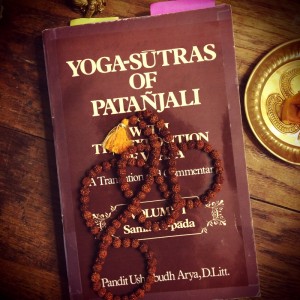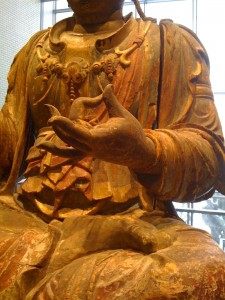 On Saturday, October 5, those of us gathered in the Meditation Center’s puja room were gifted with the thoughtful, kind, and inspiring presence of Pandit Tejomaya. Travelling to us from his Island of Peace Yoga center on Gabriola Island—in the Salish Sea off the coast of British Columbia, Canada—Pandit-ji came to share his reflections on some core teaching of the Yoga Sutras and on his experience developing what for him has been an intense, years-long practice of the yamas and niyamas.
On Saturday, October 5, those of us gathered in the Meditation Center’s puja room were gifted with the thoughtful, kind, and inspiring presence of Pandit Tejomaya. Travelling to us from his Island of Peace Yoga center on Gabriola Island—in the Salish Sea off the coast of British Columbia, Canada—Pandit-ji came to share his reflections on some core teaching of the Yoga Sutras and on his experience developing what for him has been an intense, years-long practice of the yamas and niyamas.
It’s probably safe to say that none of us thought the workshop would involve marshmallows or pie charts. But Pandit-ji’s graceful discussion of the meaning of yoga and its relationship to things like vrttis, the kleshas, karma, the accumulation of samskaras (rather like piles of minimarshmallows, don’t you think?), and the percentage of the Yoga Sutras devoted to each of Pantanjali’s eight limbs (enter the pie charts) showed us how. All this was to point out that, if we wish to achieve yoga, we’ve got a lot of practice to do, and coming up with practical ways of pursuing the yamas and niyamas is likely part of that.
Pandit Tejomaya’s own practice of the yamas and niyamas, he told us, is grounded in key insights from Swami Veda Bharati and Swami Rama of the Himalayas, including the ideas that progress in yoga involves studying oneself at the level of action, speech, and mind/thought; that this progress takes self-discipline; and that true knowledge comes from direct experience. And the practice itself? Pandit-ji takes one of the yamas or niyamas and makes a commitment to practice it in a particular, concrete way at one level (say, the level of speech) for twenty-one consecutive days. Then he moves on to practice that yama or niyama at another of the three levels (say, the level of action) for twenty-one consecutive days, finally advancing to the third level (mind/thought, for example) for (you guessed it) twenty-one consecutive days. Any mess-up puts him back to day one of whatever level he’s on. Success with one yama or niyama means choosing another, and starting the process from the beginning.
Intimidating? Maybe for some, but totally inspiring for others of us, and his gentle encouragement (and funny examples of his mess-ups) urged us to consider how we might craft similar practices for ourselves. Most of all, his very presence—graceful, serene, sincere—provided the inspiration, showing us, as it did, the end result of the devotion of a true yogi.


